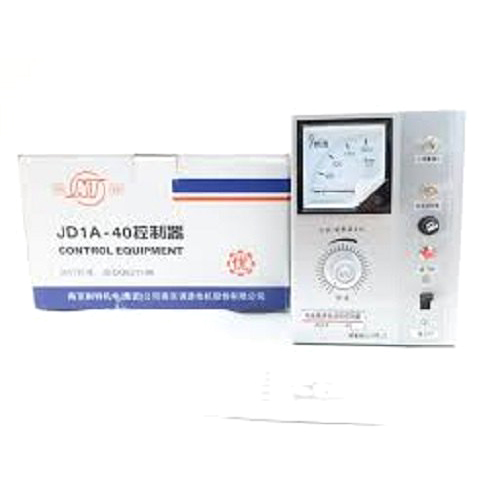Product Description
An JD1A-40 Electromagnetic Speed Control Unit (ESCU) is a device used in various applications to control the speed of an electromagnetic motor. It operates by adjusting the electrical input to the motor, thereby regulating its speed.
Here's a brief overview of how an ESCU typically works:
1. Input Signal: The ESCU receives a signal, often from a user interface or a control system, indicating the desired speed or a change in speed.
2. Processing: The ESCU processes this input signal to determine the appropriate level of power or voltage to deliver to the motor.
3. Control Circuitry: Inside the ESCU, there's usually control circuitry responsible for generating the necessary signals to modulate the power supplied to the motor. This circuitry may include microcontrollers, power transistors, and feedback mechanisms.
4. Feedback Mechanism: Many ESCUs incorporate feedback mechanisms such as encoders or sensors to monitor the actual speed of the motor. This feedback information is then used by the control circuitry to adjust the power output accordingly, ensuring that the motor maintains the desired speed even under changing load conditions.
5. Power Output: The ESCU delivers the modulated power output to the motor, effectively controlling its speed based on the input signal and feedback information.
JD1A-40 Electromagnetic Speed Control Unit finds applications in various industries where precise control over motor speed is crucial, such as in industrial machinery, robotics, conveyor systems, and electric vehicles. It enables efficient operation, precise speed control, and often contributes to energy savings by optimizing the motor's performance.

